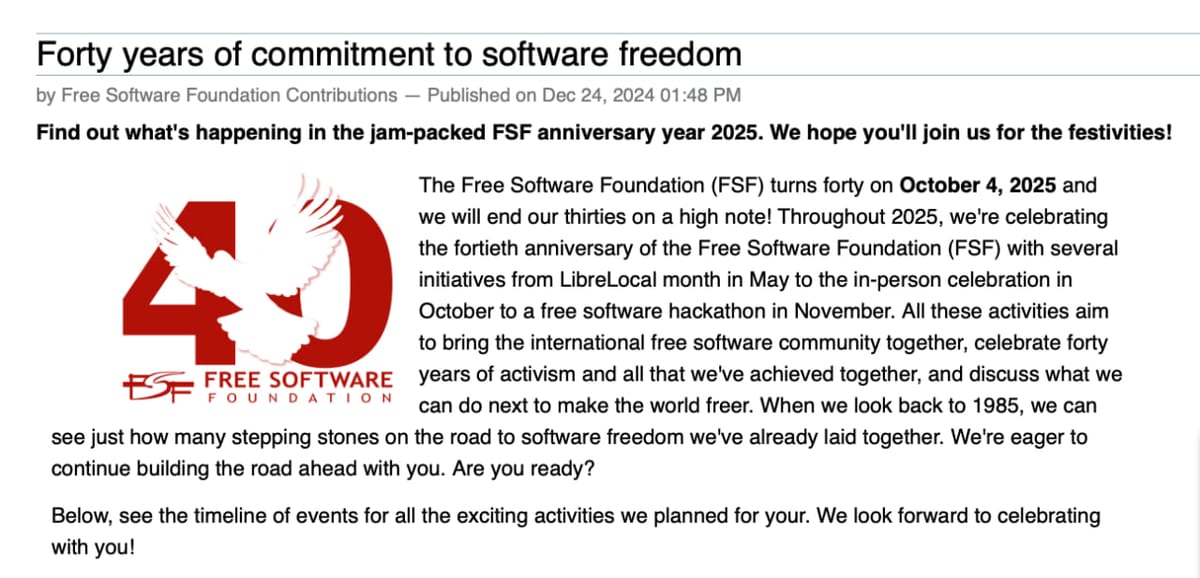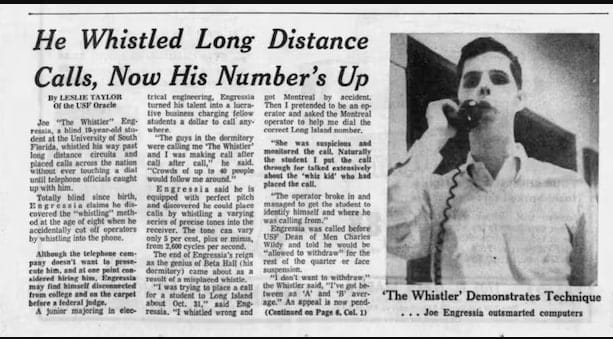The Free Software Foundation Turns 40

In 1985, just one year after launching the GNU Project, Richard Stallman founded the Free Software Foundation (FSF) to protect developers and users from companies that exploited or misappropriated open code. At the time, several firms were attempting to commercialize tools created by Stallman and his colleagues—tools originally intended to remain free for everyone.
The Four Fundamental Freedoms
The FSF’s philosophy is based on four essential freedoms, which define what makes software truly “free”:
- Freedom 0: The freedom to run the program for any purpose.
- Freedom 1: The freedom to study how the program works and adapt it to your needs (requires access to source code).
- Freedom 2: The freedom to redistribute copies so you can help others.
- Freedom 3: The freedom to improve the program and release your improvements to the public (also requires access to source code).
According to the FSF, a program is considered free software only if users enjoy all four freedoms.
This philosophy emphasizes collaboration and transparency, but it also intersects with legal systems and state regulations. Importantly, “free software” does not mean “non-commercial.” In fact, free software can be sold or distributed commercially—an essential principle that ensures its sustainability and broad adoption.
“Free” vs. “Open Source”
In English, the word free can mean both “free of charge” and “freedom.” This linguistic ambiguity often leads to confusion. Many assume that software distributed without cost is necessarily “free,” even if users cannot modify or redistribute it.
To clarify this distinction, the term “open source” was later introduced, emphasizing transparency and collaborative development rather than price.
The GPL and Legal Foundations
Three years after the FSF was founded, Stallman introduced the first version of the GNU General Public License (GPL).
This license established the legal framework for the free software distribution model, ensuring that developers and users alike could maintain their freedoms while sharing and improving software collectively.
Leadership Changes
In September 2019, Stallman stepped down as president of the FSF. The following year, Jeffrey Knauth was elected to lead the organization.
In September 2025, Knauth was succeeded by Jan Kelling, marking a new chapter in the foundation’s leadership.
Looking Ahead: The LibrePhone Project
To mark its 40th anniversary, the FSF announced a new initiative called LibrePhone a project aimed at bringing full software freedom to mobile devices.
While details remain scarce, the project’s goal is clear: to give users the same fundamental freedoms on smartphones that they already have on desktop systems—the right to run, copy, distribute, study, modify, and improve software without restriction.
Reflection
Forty years after its founding, the Free Software Foundation continues to champion a simple yet powerful idea: software freedom is a form of digital autonomy.
From the early days of GNU and the first GPL to new ventures like LibrePhone, the FSF’s mission remains unchanged—to ensure that users control their technology, not the other way around.
